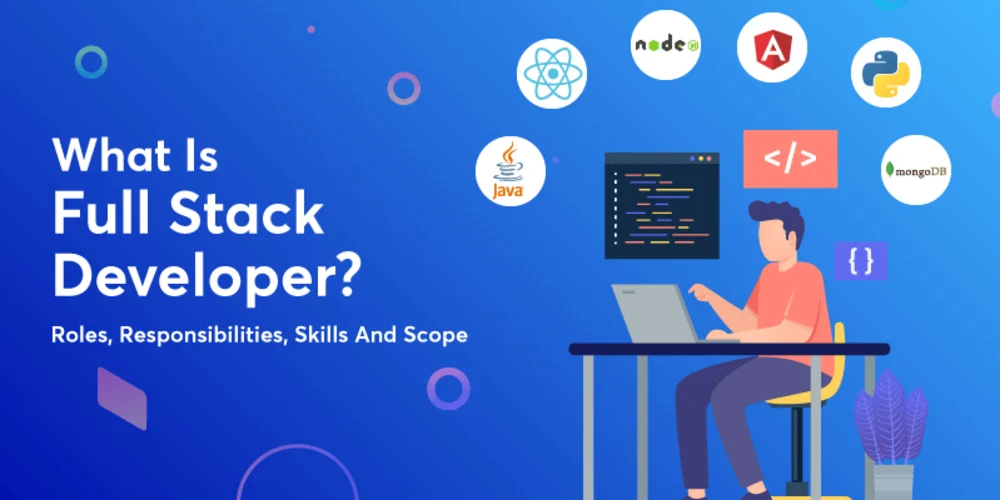In today’s tech-driven world, the role of a full-stack developer has become one of the most sought-after positions in the industry. These versatile professionals are the Swiss Army knives of software development, capable of working on both the front end (what users see) and the back end (the server and database). As businesses increasingly rely on digital platforms, the demand for full-stack developers is soaring. In 2024, the role is evolving rapidly, with new tools, technologies, and trends shaping what it means to be a full-stack developer.
What is a Full Stack Developer?
A full-stack developer is a software engineer who is proficient in both front-end and back-end development. This means they can handle the complete development process, from designing user interfaces to managing databases and server-side logic. The term “full stack” refers to the entire suite of technologies and tools required to build a fully functional web application.
- Front-End Development: This involves creating the part of the application that users interact with. It includes technologies like HTML, CSS, and JavaScript, along with frameworks such as React, Angular, and Vue.js. Full-stack developers use these tools to design responsive, user-friendly interfaces.
- Back-End Development: This focuses on the server, databases, and application logic that power the front end. It involves languages and frameworks like Node.js, Python, Ruby on Rails, and Java. Full-stack developers ensure that the server runs smoothly, processes requests efficiently, and securely manages data.
The Evolving Role of Full-Stack Developers
The role of a full-stack developer has expanded in recent years, driven by the need for faster development cycles and more integrated applications. As companies strive to deliver seamless user experiences, the responsibilities of full-stack developers have grown, making them key players in the development process.
- Increased Specialization: While full-stack developers are known for their versatility, there is an increasing trend towards specialization within the role. Developers are now often expected to have deep expertise in specific front-end or back-end frameworks while still maintaining a broad understanding of the entire stack. This specialization allows them to tackle complex challenges more effectively, making them even more valuable to employers.
- Adoption of DevOps Practices: The rise of DevOps has also influenced the full-stack developer’s role. DevOps practices, which emphasize collaboration between development and operations teams, have led to full-stack developers taking on responsibilities like continuous integration, automated testing, and deployment. This shift ensures that developers are involved throughout the application’s lifecycle, leading to faster and more reliable software delivery.
- Emergence of New Tools and Frameworks: The tech landscape is constantly evolving, and full-stack developers must stay updated with the latest tools and frameworks. In 2024, frameworks like Next.js and Remix are gaining popularity for their ability to simplify complex applications and improve performance. Additionally, the rise of low-code and no-code platforms is reshaping the development process, enabling full-stack developers to build prototypes and applications more quickly.
- Focus on User Experience (UX): As businesses prioritize user-centric design, full-stack developers are increasingly involved in ensuring that applications are not only functional but also provide a superior user experience. This means understanding UX principles and collaborating closely with designers to create intuitive and engaging interfaces.
The Future of Full Stack Development
Looking forward, the future of full-stack development is bright, with several exciting trends on the horizon. The continued growth of AI and machine learning is expected to play a significant role, with full-stack developers integrating these technologies into applications to create more personalized and intelligent user experiences. Additionally, the shift towards serverless architecture and microservices is likely to redefine how full-stack developers build and deploy applications, making the development process even more efficient and scalable.
Moreover, as remote work becomes the norm, full-stack developers are increasingly working in distributed teams, requiring strong collaboration skills and proficiency in cloud-based development environments. This trend is expected to continue, with companies seeking developers who can thrive in a remote-first world.
In conclusion, the role of the full-stack developer is more dynamic and essential than ever. As technology continues to evolve, these versatile professionals will remain at the forefront of innovation, driving the development of cutting-edge applications that shape the future of the web. Whether you’re a seasoned developer or just starting your journey, embracing the full-stack mindset is the key to success in today’s fast-paced tech landscape.






